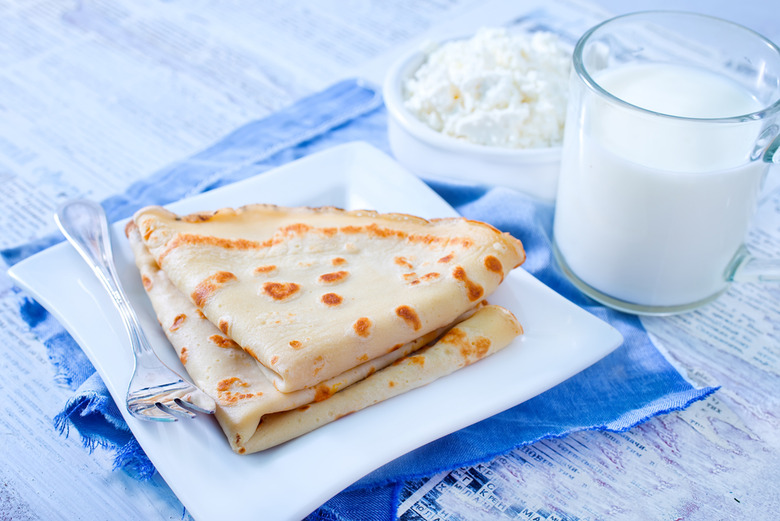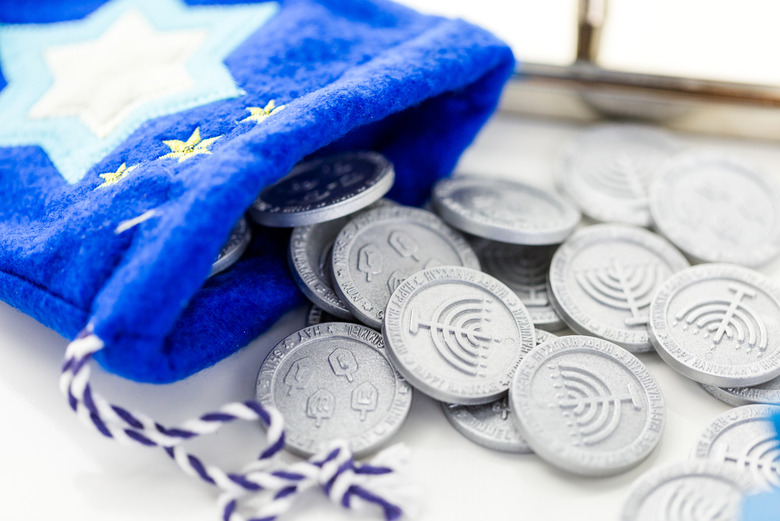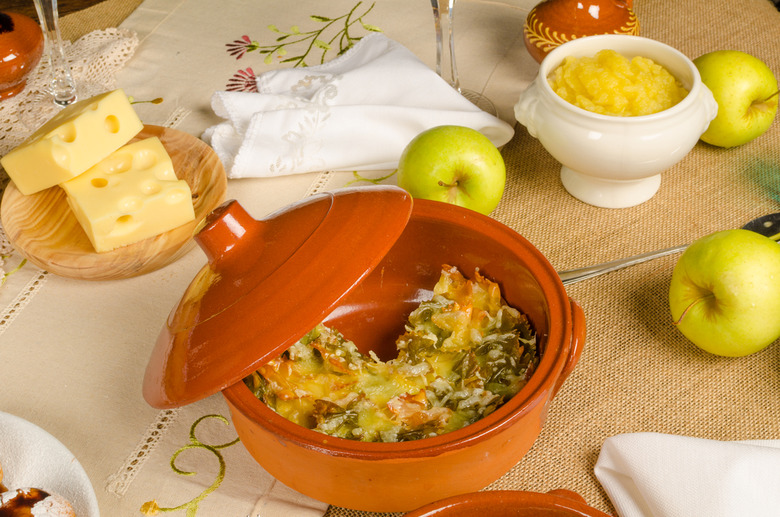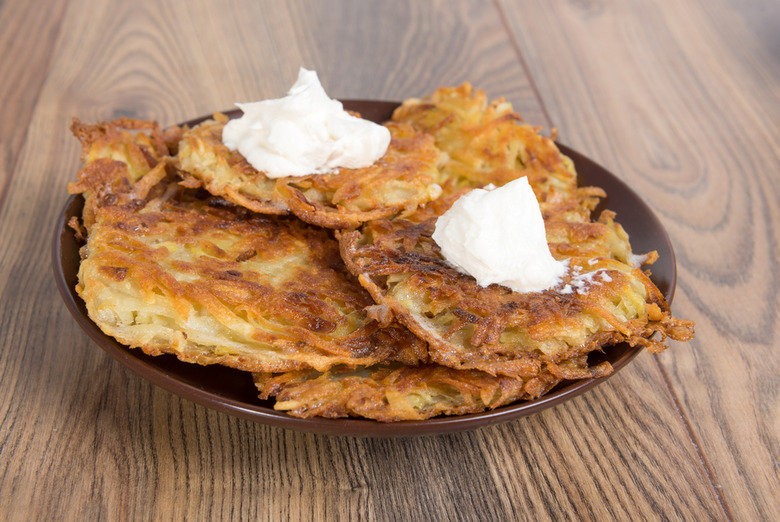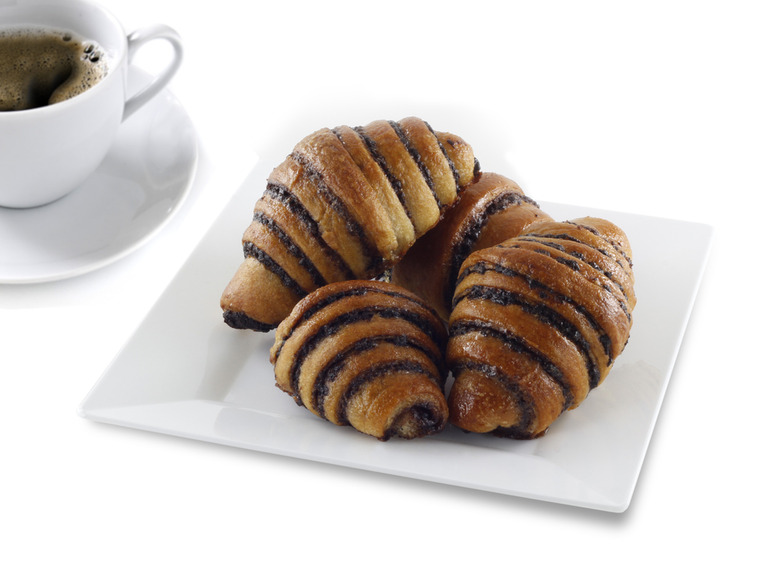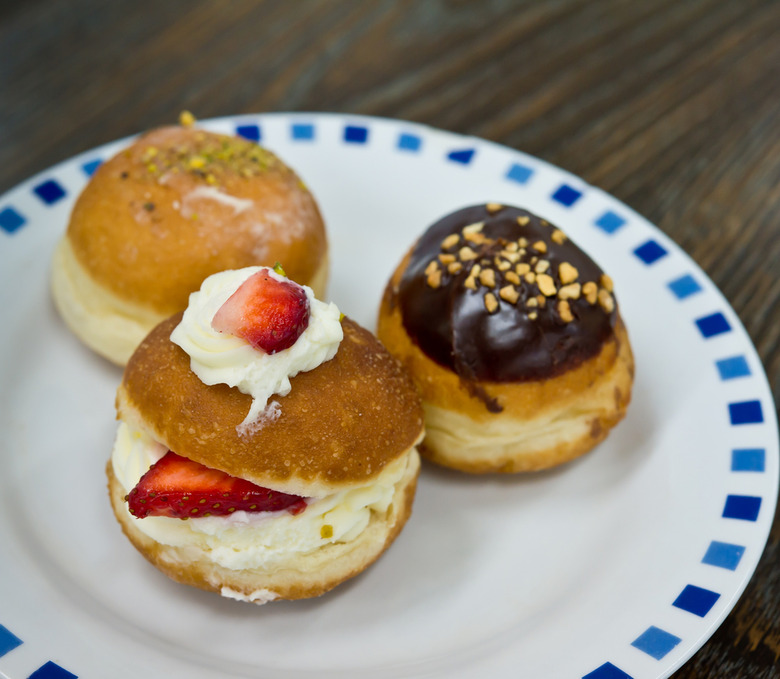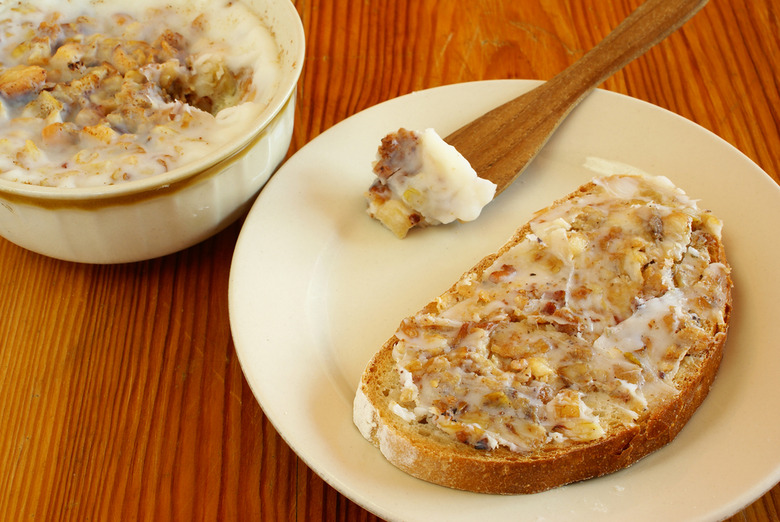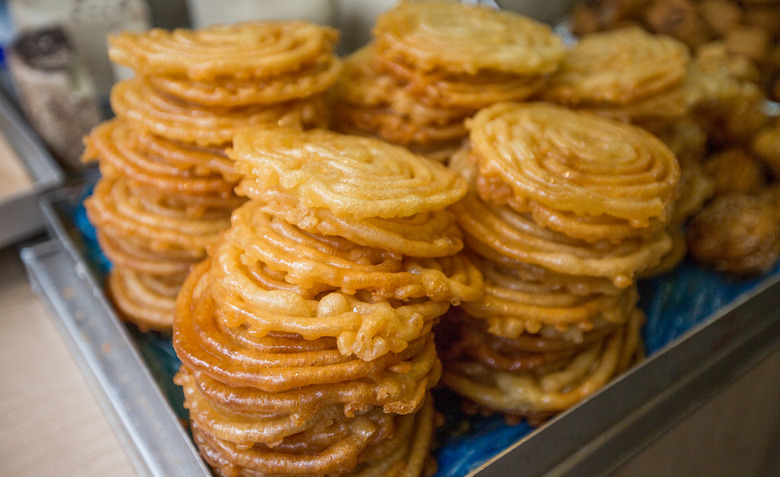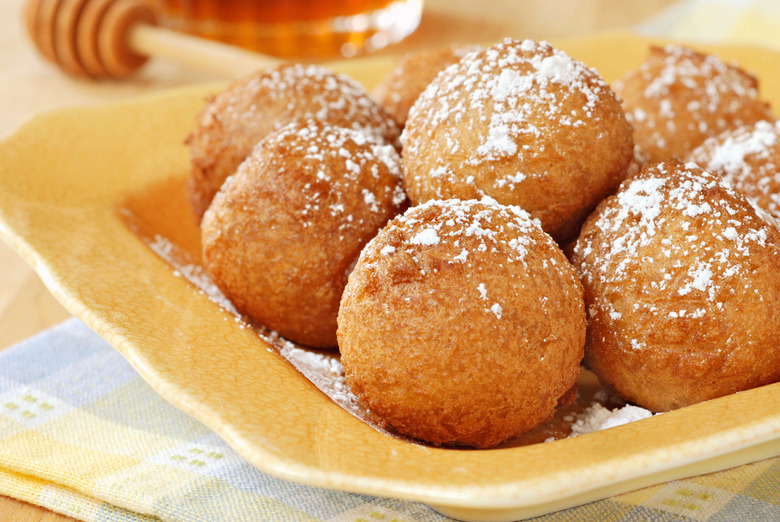9 Facts About Hanukkah Food
Like many other holidays across the globe, Hanukkah is a family affair. It's a time to come together, share food, and celebrate blessings, while passing on and creating new traditions. Communal meals during the eight days of Hanukkah are an important custom and friends who quarreled during the year are meant to reconcile at these meals. Hanukkah is the Festival of Lights, a testament to the long-lasting light that came from that small amount of oil. Foods fit for the holiday are cooked in oil to celebrate the miracle that took place during the rededication of the Holy Temple of Jerusalem. Bring on the apple fritters, vegetable pancakes, and sweet doughnuts.
What's a holiday without delicious food? And it's definitely a plus when that holiday calls for fried food and cheese. Really, who could resist cheese-filled doughnuts?
Dairy
According to legend, Judith, a pious widow, played an integral role in the liberation of the Jews. In pretending to surrender to her captors, she met Holofernes, the governor of Syrians. Attracted by her beauty, he invited her to his tent. There, she offered him cheese to make him thirsty and wine to appease his thirst. But the wine induced drowsiness, and while he slept, Judith beheaded him, which weakened the enemy and led to the historic victory of the Jews. Essentially, it was cheese that led to the downfall of the Syrian-Greeks. Cheesecake, blintzes, and other cheese-centric dishes have made their way to many Hanukkah celebrations as a result.
Hanukkah Gelt
You can play dreidel for them, or eat them straight out of the bag; those gold foil-wrapped chocolate coins are yet another delicious Hanukkah treat. The roots of gelt, Yiddish for "money," are in the first coins minted by the Jews after the Maccabees gained independence. These first coins were stamped with an image of a menorah, perhaps to signify the miracle at the rededication. In the eighteenth century, it was customary to show religious teachers appreciation with a monetary token around Hanukkah. However, by the nineteenth century, the traditional recipients had shifted from teachers to children. Now savings bonds, checks, and chocolate coins are manifestations of Hanukkah gelt.
Kugel
Kugel has a long history, beginning as something like a bready dumpling stemming from the German tradition of steaming puddings. The dish was transformed when noodles became the ingredient of choice for Jewish housewives in the sixteenth century. It morphed again with the advent of technology in the nineteenth century, and kugel became a baked item. For Hanukkah, sweet, dairy-based kugel incorporating sour cream and cream cheese become a reminder of Judith's courageous actions.
Latkes
For many, latkes are synonymous with Hanukkah, but in reality these potato pancakes descend from Italian pancakes made with ricotta cheese. It was a rabbi in Italy in the late thirteenth century who first made the connection between the pancakes and the holiday. The cheese pancakes became a quintessential Hanukkah dish because they combined dairy and fried foods. However, potato latkes are a more recent Ashkenazi invention that gained popularity in Eastern Europe during the mid-1800s after crop failures that led to mass planting of potatoes.
Rugelach
Tasty, filled cookies are fitting all year round, but the cream cheese in the dough of rugelach make them ideal for Hanukkah. Using cream cheese in cooking is a Central European tradition with ancient Middle Eastern roots. The word "rugelach," meaning "royal," descends from Yiddish and may even have Polish roots. Whipping up some rugelach cookies is a sweet way to celebrate.
Sufganiyot
Doughnut-like sweets, known as sufganiyot, are a popular Hanukkah treat, especially in Israel. They may actually derive from a yeast dough pastry mentioned in the Talmud, which were called sufganin (absorbent) because they absorbed a lot of oil in cooking. In Spain, cheese was added to these doughnuts, inspiring many fried cheese pastries popular among Sephardim. The jelly-filled version evolved among German Jews, who brought it to Israel in the 1930s.
Schmaltz
We know that fried food is essential at any Hanukkah celebration. Olive oil is said to be the preferred oil, but schmaltz or schmalz, rendered poultry fat, can also be used for frying or cooking. It plays a large role in Jewish cuisine.
Zalabia
The batter for the fried treats called zalabia is poured into extremely hot oil in a thin, swirl-like form resembling Amish funnel cakes. Once cooked, these scrumptious fritters are coated with syrup or honey
Zvingoi
Zvingoi, deep-fried dough puffs, are another traditional food at Hanukkah festivities. The puffs are dipped in sugar or honey to symbolize the cakes eaten by the Maccabees, yet another connection to the history of the holiday.

